- Home
- Thornton Wilder
The Selected Letters of Thornton Wilder
The Selected Letters of Thornton Wilder Read online
The Selected Letters of
THORNTON
WILDER
EDITED BY ROBIN G. WILDER
AND JACKSON R. BRYER
Foreword by Scott Donaldson
Letters are the only form in all literature, in all the arts, which reposes on the communication of one to one. It is this condition which renders [them] the pre-eminent vehicle for that aspect of life which is generally excluded from all literature except the novel: those innumerable trifles of the daily life, that rain of trifling details, pleasing and vexatious, which falls upon the just and the unjust and which is also an inescapable concomitant of all human life.
—THORNTON WILDER,
JOURNALS, AUGUST 20, 1951
CONTENTS
EDITORS’ NOTE
FOREWORD by Scott Donaldson
INTRODUCTION
Part One
BEGINNINGS: 1909-1920
Part Two
BRIDGES: 1920-1929
Part Three
RÔLES: 1929-1939
Part Four
WAR AND AFTER: 1939-1949
Part Five
HONORS: 1950-1960
Part Six
JOURNEYS: 1961-1975
INDEX
BOOKS BY THORNTON WILDER
ABOUT THE AUTHOR
COPYRIGHT
ABOUT THE PUBLISHER
NOTES
EDITORS’ NOTE
AS WE CONTEMPLATED HOW BEST TO PRESENT THORNTON Wilder’s correspondence, we were guided, as it were, by two seemingly contradictory statements. One was Wilder’s own remark, in a February 12, 1964, letter to his close friends Gilbert and Janet Troxell: “Did I ever tell you I once heard my mother saying to a friend (my mother who never made wise cracks) ‘It’s hard enough to write novels anyway, but it’s especially hard for Thornton because he’s illiterate?’ “ The second was playwright and director Garson Kanin’s oft-quoted response when he was asked where he went to college: “I never did; I went to Thornton Wilder.”
Wilder’s correspondence certainly gives more evidence of the extensive range of his vast store of knowledge and learning than it does of his “illiteracy.” Nonetheless, we believe that the paradox implied in these two statements is one of many puzzling and challenging aspects of Wilder, and we have sought to preserve it in this collection. We have corrected only the most obvious slips of his pen—the same word repeated twice in succession, uncrossed t’s, letters transposed within a word—and, for the most part, retained his misspellings, poor punctuation, misquotations (corrected in footnotes), and inadvertent omissions. Only in cases where meaning is unclear have we supplied, in angle brackets (used here because Wilder occasionally used square brackets), missing punctuation, missing words, or corrected spellings. Where we supply a correction to Wilder’s text, we do not leave a space between Wilder’s word and the angle-bracketed correction; in instances where we supply a missing word, we leave a space.
While some of Wilder’s epistolary infelicities can probably be attributed either to the fact that he surely wrote many letters rapidly and almost exclusively in holograph form or to the fact that his mind often moved more quickly than his pen, we feel that his carelessness about such details also testifies to something quite important about him. He was much more concerned with communicating concepts and dealing with large issues than he was with such mundane matters as spelling and punctuation. We believe that retaining these errors preserves an important aspect of the flavor of Wilder’s correspondence and that doing so in no way interferes with the reader’s appreciation of his skills as a letter writer.
From the very beginning, Wilder’s wide-ranging acquaintance, even as a teenager, with literature, music, and the visual arts was apparent in his correspondence. He was fluent in four foreign languages—French, German, Spanish, and Italian—and his letters are frequently peppered with quotations in those languages, as well as with the occasional Latin phrase. We have translated all of these foreign-language passages, no matter how brief, unless they appear in a standard English dictionary. Similarly, we have tried to identify lesser-known public figures, writers, composers, artists, and their works to which Wilder alluded in his correspondence. He had a large worldwide circle of friends and acquaintances, and we have attempted to explain references to them as well. Readers should assume that any person we do not footnote could not be identified. We feel that, in aggregate, these references suggest the extraordinary scope of Wilder’s social and cultural landscape and are a testimony to his seemingly insatiable desire to learn more and to meet new people from all walks of life. Although this means that our edition is heavily footnoted, we have tried to keep our notes brief and succinct, and to provide more detailed background information in the introductions to each of the book’s six parts.
Of necessity, we have had to make compromises in the interests of clarity and consistency. We have standardized all of Wilder’s dashes to one em in length, although he sometimes used a hyphen instead of a dash (especially in his very few typewritten letters), or, in other instances, used dashes longer than one em in holograph letters. Especially in his later years, Wilder frequently used an equals sign instead of a colon. In most instances, we have rendered these as colons. For items of correspondence on which a return address is printed as letterhead, we have transcribed that information and placed it within parentheses at the head of the item. In cases where Wilder wrote a return address, we have placed that at the top of the letter. Sometimes Wilder wrote a return address above the letterhead of the stationery, but we have always placed it below the letterhead, regardless of where he put it. We have, however, tried to place his holograph return addresses accurately with respect to whether they appeared on the left or right side of the page or were centered.
When Wilder provided a date, he almost always did so at the head of the letter; when he placed the date at the end of the letter, we have moved it to the head and noted the change. When Wilder did not provide a date or gave a partial or inaccurate date, we have added an approximate or conjectured date (usually with a question mark) in angle brackets; or we have supplied one in angle brackets based on internal evidence or a postmark (indicated by the abbreviation P.M.); or, in a few instances, we have used a date supplied by the recipient (as indicated in a footnote). We have also used a question mark in angle brackets or an angle-bracketed word or words to denote a conjectured reading of Wilder’s handwriting. Wilder occasionally added text in the margins or above the salutation of his letters. We have noted the location of this added text in angle brackets. When Wilder indicated that this marginal material should be inserted in the text of a letter, we have placed it in the text in boldface type and have given, in angle brackets, the reason for the placement. Often, probably in an effort to keep his letters to one or two pages, Wilder wrote text or a postscript perpendicularly in the margin of the last page. We have not noted these additions and have treated such material as part of the text of the letter.
We have used the following abbreviations in the headings to describe physical form: ACS (autograph card signed); AL (autograph letter unsigned); AL (Draft) (unsigned autograph letter found only in draft form); ALS (autograph letter signed); APCS (autograph postcard signed); TL (Copy) (letter found only in transcribed typewritten unsigned form); TLS (typewritten letter signed); and WIRE (telegram). The number of pages cited at the head of the letter refers to the number of sides of paper on which the original is written, regardless of whether or how Wilder numbered the pages. We have listed the repository of each letter in the heading. In cases where we located photocopies and/or transcriptions as well as the original copy of an item, we have noted only the location of the original. For
items owned by private individuals, we have provided no identification of those individuals. We have used the following abbreviations for repositories:
Academy of Motion Picture Academy of Motion Picture
Arts and Sciences Arts and Sciences Library,
Beverly Hills, CA
Albers Foundation Joseph and Anni Albers
Foundation, Bethany, CT
Berea Berea College, Berea, KY
Berg Berg Collection, New York
Public Library
Billy Rose Billy Rose Theatre Collection, New York Public Library Performing Arts Research Center
British Library British Library, London
BU Boston University
CalTech California Institute of Technology, Pasadena
Chicago University of Chicago
Columbia Columbia University, New York, NY
Cornell Cornell University, Ithaca, NY
Harvard Harvard University, Cambridge, MA
Hobart/William Hobart & William Smith
Smith Colleges, Geneva, NY
Houston University of Houston
Huntington Huntington Library, San Marino, CA
JFK John F. Kennedy Library, Boston, MA
Lawrenceville Lawrenceville School, Lawrenceville, NJ
LofC Library of Congress, Washington, DC
Morgan Morgan Library, New York, NY
National Archives of Canada National Archives of Canada, Ottawa
Newberry Newberry Library, Chicago, IL
New Dramatists New Dramatists, New York, NY
NYU New York University
Oberlin Oberlin College, Oberlin, OH
Penn State Pennsylvania State University, University Park
Pennsylvania University of Pennsylvania, Philadelphia
Princeton Princeton University, Princeton, NJ
Private Privately owned
Redwood Redwood Library & Athenaeum, Newport, RI
Rice Rice University, Houston, TX
Schlesinger Schlesinger Library, Radcliffe College/Harvard University, Cambridge, MA
Smith Smith College, Northampton, MA
SUNY-Buffalo State University of New York at Buffalo
Syracuse Syracuse University, Syracuse, NY
Tennessee University of Tennessee, Knoxville
Texas University of Texas, Austin
Theatermuseum Österreichisches Theatermuseum, Vienna
UCLA University of California, Los Angeles
Vassar Vassar College, Poughkeepsie, NY
Virginia University of Virginia, Charlottesville
Wisconsin University of Wisconsin, Madison
WisHist Wisconsin Historical Society, Madison
Wooster College of Wooster, Wooster, OH
Yale Beinecke Library, Yale University, New Haven, CT
Literally hundreds of people have assisted in the decade that we have spent gathering, selecting, and editing the correspondence in this volume, and we can acknowledge only a few of them here. Our debts of gratitude must begin with Tappan Wilder, the literary executor of the Wilder estate. It was his idea that we undertake this project. Thereafter, he did the seemingly impossible by continually giving us the benefit of his knowledge, contacts, and expertise without in any way interfering in our selection process. Among the many tasks he performed generously and cheerfully was being one of our readers, going through the first draft of our edition, correcting errors and supplying missing information. Our four other readers were Penelope Niven, who took time from researching her biography of Wilder to be of great assistance; Hugh Van Dusen, our editor at HarperCollins; Barbara Hogenson, our agent; and Mary C. Hartig. We also acknowledge with gratitude the support of the late Catharine Kerlin Wilder. The vast majority of Wilder’s correspondence is to be found at the Beinecke Library of Yale University; we are deeply indebted to Patricia Willis, the curator of the Beinecke’s American Literature Collection, and the staff, especially Diane Ducharme and Stephen C. Jones, for a great deal of assistance over many years.
It is impossible here to list the names and affiliations of the numerous librarians throughout the world who provided us with photocopies of the Wilder correspondence in their collections. Others who assisted us in locating or annotating frequently elusive items were: Andrew Arnold, John Auchard, the late Jonas Barish, John Barnett, Roland Baumann, Sally Higginson Begley, Eric Bentley, Alice L. Birney, Charles Boewe, Roger Bourland, Jaime H. Bradley, Clarissa Hutchins Bronson, Andreas Brown, Dalma Hunyadi Brunauer, Elizabeth J. Bryer, Edward Burns, David and Denise Carlson, Claus Clüver, Robert Cowley, Jonathan Croll, J. S. Cummins, Barry Day, Suzanne del Gizzo, Russell DiNapoli, Frederick DuPuy, Elizabeth Edminster, Barbara Eggleston, Lewis W. Falb, Ruth Farwell and the late Byron Farwell, William Ferris, James Fisher, Neil Fraistat, Robert Freedman, Nola Frink, Greg Gallagher, the late Donald Gallup, Julia Gardner, Thierry Gillyboeuf, Charles Glenn, the late Richard Goldstone, Linda Gordon, Catharine Wilder Guiles, Jennifer Gully, the late Mel Gussow, Christopher G. Hale, Naomi Hample, G. Laurence Harbottle, Ralph Hardee-Rives, the late Gilbert Harrison, Maurene Y. Hart, Elisabeth Hartjens, Jacqueline Haun, Gary Heyde, Bobbie Hopper, Mrs. Edward Hopper, Israel Horovitz, Kathryn Johnson, Merrie Martin Jones, Michael Kahn, Jerome Kilty, Lotte Klemperer, Mario Laserna, Hugh Lee, Julian Le Grand and the late Eileen Le Grand, Theodore Leinwand, Mary Lincer, Annemarie Link, Michael A. Lofaro, Robert Longsworth, Nita Walter McAdams, J. D. McClatchy, the late Mary McGrory, John McIntyre, S.J., Vera M. McIntyre, Marilyn McMillan, Richard Mangan, Theodore Mann, Caroline Maun, Anne Marie Menta, E. Ethelbert Miller, Tom Miller, James Morton, Geoffrey Movius, Tommaso Munari, Joseph A. Mussulman, F. J. O’Neil, Sharon Peirce, Barbara Perlmutter, Yves Peyre, Howard Pierson, Charles A. Porter, Margaret Powell, Diana Prince, Pamela Rankin-Smith, Chad S. Reingold, Diane Rielinger, Harriet Robinson, Ned Rorem, Lois Rudnick, Jessica Ryan, Jeffrey L. Sammons, Judith Schiff, Paul Schlueter, Marian Seldes, Ed Smith, Joseph Thomas Snow, Edita Spinosi, Peter Stansky, Jan Stieverman, Irvin Stock, Cecilia and Peter Sturm, Sue Swartzlander, G. Thomas Tanselle, Liffey Thorpe, Harry J. Traugott, June Trolley and the late Leonard Trolley, Serge Troubetzkoy and the late Dorothy Ulrich Troubetzkoy, Nick Tsacrios, Jay Tunney, Fred Walker, Julia Walworth, Barbara Whitepine, Catharine Williamson, Martha Wilson, Autumn Winslow, Peter Wiseman, Douglas Wixson, Luke Yankee, Matthew Young, and Waldemar Zacharasiewicz.
The arduous task of transcribing the correspondence fell entirely to helen DeVinney, who not only solved the difficulties of reading Wilder’s handwriting but also made certain that our editorial procedures were consistent. Robert Bowman was of great assistance in tracking down often obscure information for our footnotes. The staff of the Department of English at the University of Maryland and its successive chairs, Charles Caramello, Gary Hamilton, and Kent Cartwright, provided photocopying and mailing facilities.
FOREWORD
I
These letters of Thornton Wilder are a pleasure to read: as entertaining and enlightening, almost, as a conversation with the man himself. They also introduce us to the mind and heart of one of the great American writers of the twentieth century. Wilder belonged to a literary generation that included Ernest Hemingway, William Faulkner, F. Scott Fitzgerald, and John Dos Passos—all of them born between 1896 and 1899—and was proud of it. “[N]othing interests me more than thinking of our generation as a league and as a protest to the whole cardboard generation that precedes us,” he wrote Fitzgerald. Wilder had a long and sparkling career, highlighted by three Pulitzer Prizes: for his novel The Bridge of San Luis Rey (1927), and for the plays Our Town (1938) and The Skin of Our Teeth (1942). Altogether he wrote seven novels and three major plays. The Bridge of San Luis Rey became a best-seller. Our Town became part of the American experience. The third play, The Matchmaker (1954), was adapted into Hello, Dolly!, a tremendously successful musical comedy. Almost everything Wilder produced found its audience, including his last novel Theophilus North (1973). Yet he remains, in Malcolm Cowley’s phrase, “the m
ost neglected author of a brilliant generation.”
Why should this be so? Amos N. Wilder, Thornton’s older brother, devoted much of his short book on Thornton Wilder and His Public to puzzling out the answers. Most commentators on his work, he concluded, did not know what to do with him. Wilder’s works did not fit into the critical imperative of making it new. True, he demanded of himself the same compression of language that Ezra Pound was lobbying for in poetry and Hemingway was practicing in prose. And his plays were highly experimental in stagecraft and technique. But then there was the subject matter, where Wilder was reaching beyond his grasp toward a fusion of the modern and the traditional, the present and the past, with an emphasis on ordinary people. On the surface, as among George and Emily and the Stage Manager in Our Town, this seemed to smack of the sentimental, than which in critical opinion nothing could be worse. But this conclusion ignores the play’s purgatorial third act, and Emily’s disastrous return to her twelfth birthday.
Wilder’s popularity worked against his reputation among those who regarded starving as a precondition of artistic excellence. Nor was he political enough to please the doctrinaire. “Yes, Wilder writes perfect English but he has nothing to say in that perfect English,” Mike Gold, editor of the communist New Masses, commented in a review of the 1930 novel The Woman of Andros. Where were the streets of New York in his “little novels”? Where the idealists in union halls? Their oppressors at country clubs? Wilder did revisit the Midwest of his boyhood in Heaven’s My Destination (1935) and The Eighth Day (1967), but these novels were not saddled with proletarian propaganda. Universal questions spanning the centuries interested him, and to those there could be no fast answers. In his books and plays, he followed Chekhov’s dictum that the “business of literature is not to answer questions, but to state them fairly.”
II
Thornton Wilder has been somewhat unlucky in his biographers, a situation that promises to change with the arrival of Penelope Niven’s book. Meanwhile, this selection of his correspondence, judiciously edited and annotated by Robin G. Wilder and Jackson R. Bryer, serves nicely as a Life in Letters. The editors’ headnotes to each of the six chronological sections provide an excellent summary of significant events in the lives of Wilder and his family. The letters themselves show how he reacted to these circumstances. Fact: We learn from the editors’ Introduction that during an eleven-year period between Thornton’s ninth and twentieth birthdays, the boy himself, his four siblings, and his father and mother lived together under the same roof for only twelve months altogether. What that felt like: Thornton at fourteen, alone at prep school in China, writes, “Oh, but Father, I wish I could see Mother. It seems many years since I saw her last. I want to see her very very much. When you make your plans try and let me be near her and [his brother] Amos. And of course father dear, I want you too; my dear Papa—all together.”

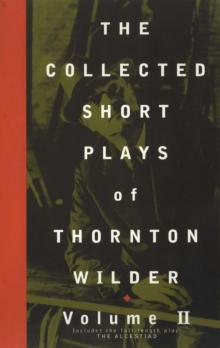 The Collected Short Plays of Thornton Wilder, Volume II
The Collected Short Plays of Thornton Wilder, Volume II Penelope Niven
Penelope Niven The Selected Letters of Thornton Wilder
The Selected Letters of Thornton Wilder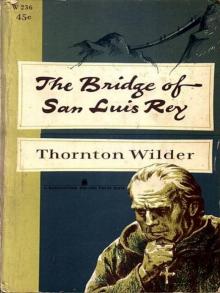 The Bridge of San Luis Rey
The Bridge of San Luis Rey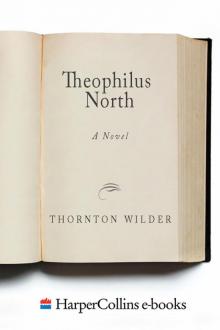 Theophilus North
Theophilus North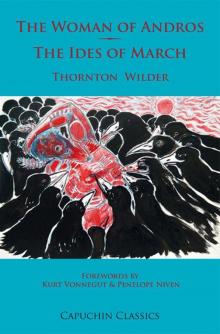 The Woman of Andros / the Ides of March
The Woman of Andros / the Ides of March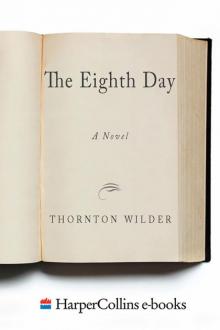 The Eighth Day
The Eighth Day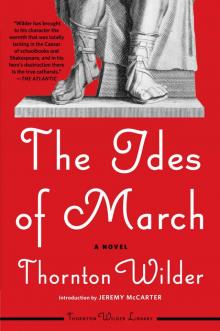 The Ides of March
The Ides of March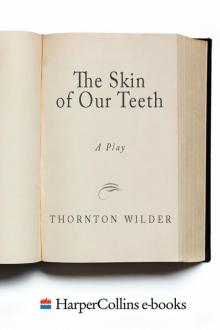 The Skin of Our Teeth
The Skin of Our Teeth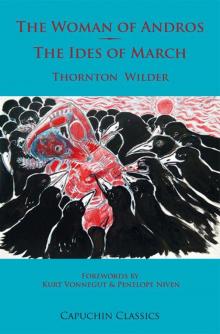 The Woman of Andros and The Ides of March
The Woman of Andros and The Ides of March